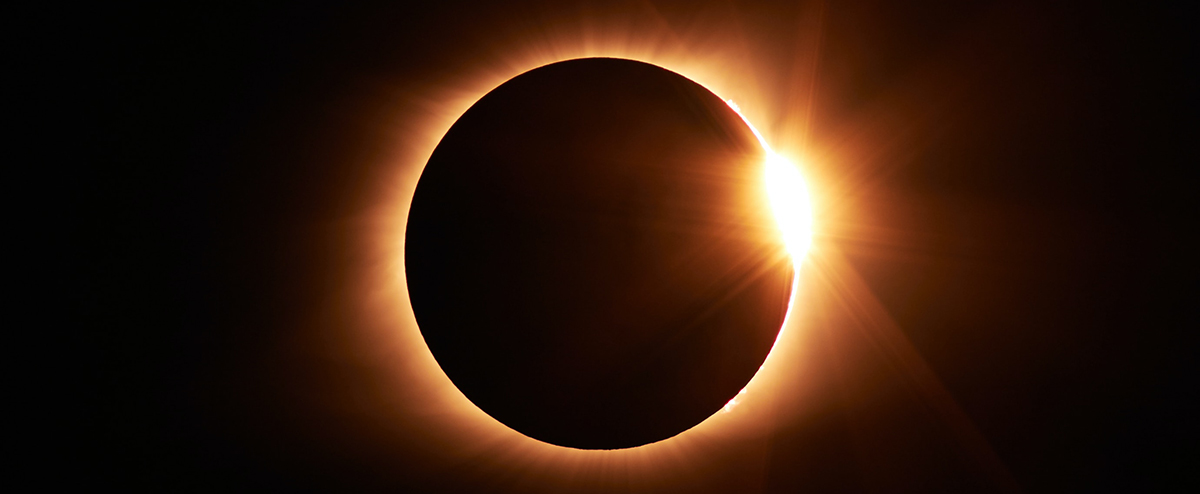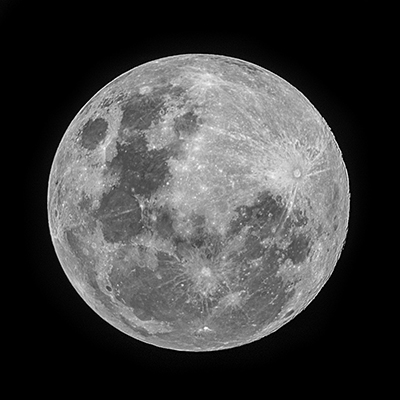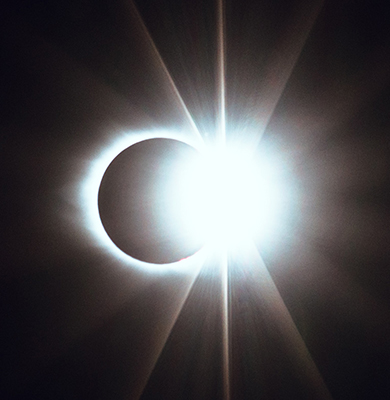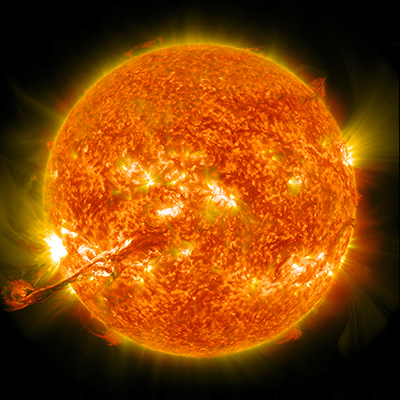


A solar eclipse happens when the Moon passes directly between Earth and the Sun, casting a shadow on the surface of Earth. From an earthly perspective, it looks as if the Moon has blocked out the light of the Sun. Total eclipses of the Sun are very rare in any given location, occurring roughly once every 360 years in the same place. However, several solar eclipses may occur each year.



Next to the Sun, the Moon is the brightest object in
our sky, more than 2,000 times as bright as Venus. Even without a
telescope, we
can see large areas on the Moon that are darker
than the rest.
Early observers imagined these might be seas,
and they were given names such as the Sea of Tranquillity.
We now know that there is neither liquid water nor an
atmosphere on the Moon. The so-called "seas" are plains
of volcanic rock where molten lava flowed into
huge
depressions caused by giant meteorites, then
solidified. Volcanic activity on
the moon ceased about two
billion years ago.
Almost every ancient culture recognized the Sun as the giver of life and primary power behind events here on Earth. The Sun is the center of our solar system, our local star. It has no permanent features because it is gaseous-mainly incandescent hydrogen. The temperature of the Sun's visible yellow disk-the photosphere-is about 9,900°P (5,500°C). Over the photosphere, there are layers of hotter gas-the chromosphere and corona. The thin gas in the corona is at about a million degrees. By using spectroscopic analysis, scientists know that the Sun, like most stars, is made up mostly of hydrogen.